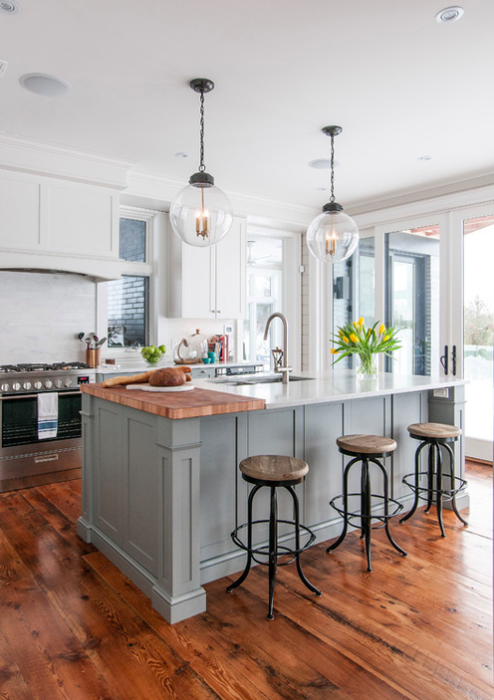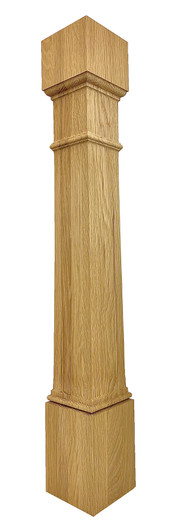The Value of a Sturdy Kitchen Island Leg in Creating a Functional Food Preparation Area
A sturdy kitchen area island leg offers as an essential component in developing a practical food preparation atmosphere, providing needed support for both the kitchen counter and different kitchen tasks. As kitchens develop into multifunctional locations for food preparation, dining, and mingling, the selection of products and design factors to consider for island legs comes to be significantly crucial.
Advantages of Sturdy Island Legs
Giving crucial support, sturdy kitchen area island legs play a pivotal role in improving the capability and toughness of kitchen islands - kitchen island leg. These legs not only bear the weight of the kitchen counter and any kind of extra products put on the island, yet also add to the overall security of the structure. A well-supported cooking area island guarantees that it stays upright and practical, also under hefty usage, which is especially crucial in active kitchen area settings
Additionally, tough island legs can boost the visual allure of the kitchen area. They supply a strong structure that can enhance numerous layout styles, from modern to conventional. This adaptability enables house owners to customize their kitchen area islands according to personal preference while guaranteeing that the architectural stability remains uncompromised.
Along with their encouraging duty, robust kitchen island legs can likewise boost safety and security. A stable island minimizes the threat of mishaps triggered by tipping or tottering, which is especially important in houses with kids or senior people. In addition, solid legs can promote a seamless flow of activities, enabling efficient dish prep work and social interactions within the cooking area space. Inevitably, purchasing strong cooking area island legs is essential for a useful and visually pleasing cooking location.
Materials for Kitchen Island Legs
When selecting materials for cooking area island legs, durability and aesthetic appeal are essential aspects to consider. The most common products include wood, metal, and engineered timber, each offering one-of-a-kind benefits.
Hardwood, such as oak, maple, or cherry, is a traditional option as a result of its strength and ageless charm (kitchen island leg). It can endure significant weight and is immune to wear, making it suitable for high-use kitchen settings. In addition, hardwood can be tarnished or painted to complement various kitchen area designs
Steel legs, often crafted from stainless steel or wrought iron, offer a contemporary and commercial appearance. They are exceptionally strong and can sustain considerable lots while being resistant to wetness and warm, which is useful in a cooking location. Steel legs can likewise be conveniently cleaned, improving their functionality.

Style Considerations for Stability
The choice of products for kitchen island legs straight affects the layout considerations for security. When designing a cooking area island, it is paramount to examine the weight-bearing ability of the chosen materials. Heavier products, such as solid timber or steel, generally give better security, specifically under the tension of daily usage.
Furthermore, the leg design have to include proper geometry to boost stability. A broader base increases the support location, lessening the danger of tipping or wobbling. Factor to consider ought to additionally be provided to the elevation of the legs; disproportionate leg sizes can bring about imbalance, endangering the total stability of the island.
Furthermore, the circulation of weight across the island is essential. Guaranteeing that the leg positioning straightens with the heaviest elements, such as countertops and appliances, will additionally boost security.
Upkeep Tips for Long Life

Depending on the material of the legs-- whether timber, metal, or composite-- ideal cleaning approaches should be used. Metal legs may need a light polish to avoid corrosion and maintain their gloss.
If the kitchen island experiences hefty usage, take into consideration reinforcing the legs with extra brackets or supports to boost resilience. By following these maintenance tips, house owners can guarantee their cooking area island legs continue to be durable and useful for years to come.
Choosing the Right Leg Design
Regular upkeep guarantees that kitchen island legs remain practical and tough, but choosing the best leg style is just as important for both appearances and support. The selection of leg style can significantly influence the general design and consistency of your cooking area.

Capability is one more vital element. For circumstances, thicker legs or those with a durable base can support larger countertops and equipment, improving the island's utility. Conversely, slim legs may create a ventilated appearance, ideal for lighter styles yet potentially less encouraging.
Verdict
In recap, the significance of sturdy kitchen island legs can not be overstated in the creation of a useful cooking location. These legs give crucial support, improve stability, and add to the general aesthetic of the kitchen area. By meticulously picking suitable materials and layouts, in addition to applying proper maintenance practices, the long life and efficiency of cooking area islands can be made sure. Ultimately, purchasing robust island legs is fundamental to attaining a secure and efficient culinary atmosphere.
A sturdy cooking area island leg offers as an essential component in developing a useful food preparation environment, offering necessary support for both the kitchen counter and different cooking area tasks.Offering crucial assistance, durable kitchen area island legs play a critical role in boosting the performance and durability of kitchen islands. Ultimately, investing in strong cooking area island legs is necessary for a practical and visually pleasing redirected here cooking area.
Consideration must likewise be offered to the height of the legs; disproportionate leg sizes can lead to imbalance, compromising the overall stability of the island.
Wooden legs give warmth and a traditional appearance, while metal legs use a industrial and modern-day feeling.
Comments on “Choosing the Ideal Kitchen Island Leg for Resilience and Capability”